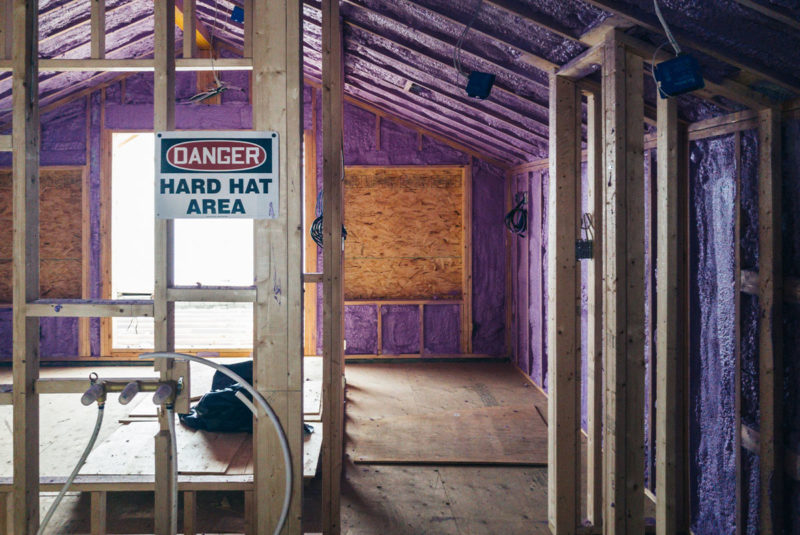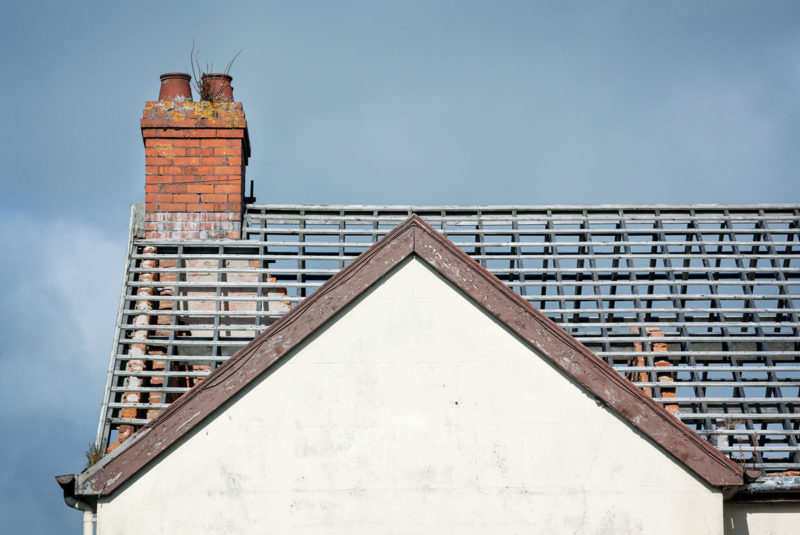If you’re in the market for a home, you may be wondering if it’s better to buy a new house or remodel an existing one. Whether you go with a move-in ready home or a fixer-upper, each option comes with its pros and cons. Understanding what they are can help you to make the decision that’s right for you.
If you’re leaning toward rehabbing an older home or buying a fixer-upper, you may be surprised at all of the mortgage options out there to help you buy your future home.
Move-In Ready Homes: Pros and Cons
As you might’ve guessed, move-in ready means you don’t have to worry about fixing anything before you move in. That can be important if you need to move quickly because you’re relocating for work or your lease is ending.
Pro: Everything is up to date
With a move-in ready home, you’re likely to have updated appliances, wiring, plumbing and insulation. That makes your home safer, more energy-efficient and eco-friendly.
Pro: Fewer hidden problems
A move-in ready home is less likely to have hidden problems, like mold, structural issues, termite or pest infestations or faulty wiring or plumbing.
Of course, no home is perfect, so you’ll want to get a home inspection done before you buy. It could help tip you off to any lurking issues.
If any problems need to be addressed, you can either negotiate with the seller to deal with the problem, negotiate with the seller to offer you concessions or a discount on the sale price so you can deal with the problem or walk away from the deal.
Pro: Easier to get a loan
If you want to buy a move-in ready home, you’ll have a wider range of loan options available because lenders know there are fewer potential problems with a move-in ready home. You’ll also spend less time filling out mortgage loan applications.
Con: It’s more expensive
Well, at least in the beginning. A fixer-upper usually costs less than a move-in ready home in the same area. In a competitive housing market, that can make move-in ready homes harder to find and afford.
Con: Limited ability to customize
With a move-in ready home, there’s less freedom to customize. You can make cosmetic changes, like repainting or hanging wallpaper, but if you want to change the floor plan or create an open kitchen, you’ll have to work within the existing limitations of the home.
Fixer-Upper Homes: Pros and Cons
Fixer-uppers are homes in need of major repairs or renovation. These homes carry some level of risk, but they can be a great way to get a home for less.
Pro: Growing availability
According to Harvard University’s Joint Center for Housing Studies, almost 80% of the nation’s 137 million homes are now at least 20 years old and 40% are at least 50 years old.[1] That means there are more and more homes on the market that could benefit a lot from a little TLC.
Pro: Lower purchase price
A home that needs TLC will cost a lot less to buy. With the right improvements, you could get an amazingly affordable home in a neighborhood you wouldn’t normally be able to afford. And here’s a bonus pro: If home prices in the neighborhood go up, you can build equity faster.
Pro: Less competition
In a crowded housing market where sellers are getting multiple offers and bidding wars are a fact of life, buying a fixer-upper can help you avoid competition.
Pro: Freedom to customize
Want an open floor plan? Thinking about converting the attic into a bedroom? Seriously considering making the home an eco-friendly marvel?
To quote 90s hip-hop fave Black Sheep: The choice is yours.
With a fixer-upper, you have the freedom to design the home of your dreams, as long as it works with the existing “bones” of the home and meets local zoning requirements.
Con: The cost of renovations
Even if the fixer-upper is a bargain, don’t forget that you’ll need money to cover the cost of renovations. These costs can add up quickly, especially if you’re buying in an area where labor and materials are expensive.
Con: Planning and submitting applications
Lenders won’t give you a fixer-upper loan until you give them a detailed plan showing how you plan to renovate the home and how much it’ll cost.
And before you start looking up “how to remodel a kitchen” on YouTube, you should know that most lenders will require that you hire a licensed contractor. So, no DIY projects – unless you happen to be a contractor by profession.
Con: Time to complete renovations
Renovations take time. And they usually take longer than anticipated. You’ll either need to find someplace to live while your fixer-upper is getting fixed, or you’ll have to live in your home/active work-site.
Loans You Can Use To Buy a Home and Remodel
If you’ve decided to take on the challenge of a home renovation or home remodel, there are several loan options available that can help you finance the home and the renovation costs in one convenient loan.
Fannie Mae HomeStyle® and Freddie Mac CHOICERenovation® loans
If you apply for a renovation loan and have a credit score of 620 or higher, you can take advantage of conventional loan programs like Fannie Mae HomeStyle®[2] or Freddie Mac CHOICERenovation®.[3]
These loan programs let you borrow enough to cover the cost of renovation and the purchase price or the “as completed” appraised value (the potential value of your home after renovations), whichever is lower.
These loans allow you to buy and renovate:
- One to four-unit single-family or multifamily homes that also serve as a primary residence
- Manufactured homes
- One-unit second homes or investment properties
- Units in planned unit developments (PUDs), condominiums or cooperatives
Pro tip: If you’re a first-time home buyer buying a 1-unit single-family home, you could pay as little as 3% down.
FHA 203(k) loans
If you want to become a homeowner but have less-than-perfect credit, a Federal Housing Administration (FHA) 203(k) loan (aka the federal fixer-upper loan) could be the way to go.
Like the Fannie Mae and Freddie Mac options, FHA 203(k) loans combine the cost of buying and renovating a home into a single loan, and you can borrow up to 110% of the home’s potential value.[4] You can qualify for an FHA 203(k) loan with a 580 credit score and make a 3.5% down payment.[5]
FHA 203(k) loans are limited to primary residences. You can’t use them to buy and remodel a second home or investment property.
You’ll also need to work with an FHA-approved contractor and an approved 203(k) consultant who will be tasked with overseeing your renovation project.
VA renovation loans[6]
If you’re an eligible service member, veteran or surviving spouse, a U.S. Department of Veterans Affairs (VA) loan is a great way to buy a home. There’s no down payment requirement, and you can get great interest rates.
These loans let you combine the cost of renovations or alterations with the home’s purchase price. If you decide to take this route, you have to work with a VA-approved contractor.
Renovating vs. Buying a New Home: The Choice Is Yours
There are lots of reasons to buy a move-in ready home, like convenience and less drama. On the other hand, if you have the time and you’re willing to put in the extra effort, a fixer-upper could be an affordable way to finally live in the home of your dreams.
The Short Version
- Fixer-uppers and move-in ready homes have their pros and cons. Consider convenience, cost and whether you can manage the renovation loan application process
- While fixer-uppers may let you buy a home you couldn’t otherwise afford, they come with added risks
- There are conventional and government-backed loans for fixer-uppers that let you combine the home’s purchase price and cost of renovation into one loan
Harvard University’s Joint Center for Housing Studies. “Improving America’s Housing 2019.” Retrieved November 2021 from https://www.ncsha.org/resource/harvard-universitys-joint-center-for-housing-studies-improving-americas-housing-2019/
Fannie Mae. “HomeStyle® Renovation Mortgage.” Retrieved November 2021 from https://singlefamily.fanniemae.com/media/5041/display
Freddie Mac. “CHOICERenovation® Mortgages.” Retrieved November 2021 from https://sf.freddiemac.com/working-with-us/origination-underwriting/mortgage-products/choicerenovation
U.S. Department of Housing and Urban Development. “203(k) Rehab Mortgage Insurance.” Retrieved November 2021 from https://www.hud.gov/program_offices/housing/sfh/203k/203k–df
U.S. Department of Housing and Urban Development. “MAXIMUM MORTGAGE LIMITS 2022.” Retrieved November 2021 from https://www.hud.gov/program_offices/housing/sfh/lender/origination/mortgage_limits
U.S. Department of Veterans Affairs. “VA Home Loan Guaranty Buyer’s Guide.” Retrieved November 2021 from https://www.benefits.va.gov/HOMELOANS/documents/docs/VA_Buyers_Guide.pdf




